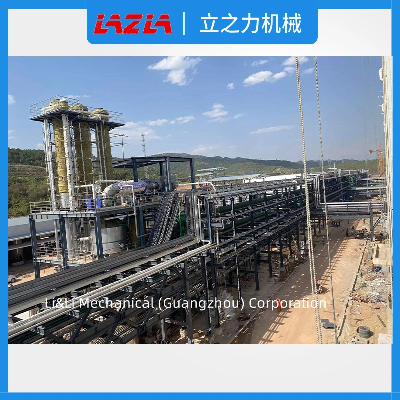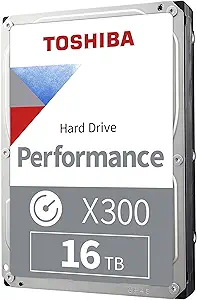1.Industrial fractionating columnsFractional distillation is
one of the unit operations of chemical
engineering. Fractionating columns are widely used in the
chemical process industries where large quantities of liquids have
to be distilled. Such industries
are petroleum processing, petrochemical production, natural
gas processing, coal
tar processing, brewing, liquified
air separation,
and hydrocarbon solvents production and similar
industries but it finds its widest application in petroleum
refineries. In such refineries, the crude oil feedstock is a
complex, multi-component mixture that must be separated, and yields
of pure chemical compounds are not expected, only groups of
compounds within a relatively small range of boiling points,
also called fractions. That is the origin of the
name fractional distillation or fractionation. It is
often not worthwhile separating the components in these fractions
any further based on product requirements and economics.
Distillation is one of the most common and energy-intensive
separation processes. The effectiveness of separation is dependent
upon the height and diameter of the column, the ratio of the
column's height to diameter, and the material that comprises the
distillation column itself. In a typical chemical plant, it
accounts for about 40% of the total energy
consumption. Industrial distillation is typically performed in
large, vertical cylindrical columns (as shown in Figure 2) known as
"distillation towers" or "distillation columns" with diameters
ranging from about 65 centimeters to 6 meters and heights ranging
from about 6 meters to 60 meters or more. Industrial
distillation towers are usually operated at a continuous steady
state. Unless disturbed by changes in feed, heat, ambient
temperature, or condensing, the amount of feed being added normally
equals the amount of product being removed.The amount of heat
entering the column from the reboiler and with the feed
must equal the amount of heat removed by the overhead condenser and
with the products. The heat entering a distillation column is a
crucial operating parameter, the addition of excess or insufficient
heat to the column can lead to foaming, weeping, entrainment, or
flooding.2.Applicable Industry All these products are widely
used in the chemical process industries where large quantities of
liquids have to be distilled. Such industries
are petroleum processing, petrochemical production, natural
gas processing, coal
tar processing, brewing, liquified
air separation,
and hydrocarbon solvents production and similar
industries but it finds its widest application in petroleum
refineries.The application of distillation can roughly be
divided into four groups: laboratory scale, industrial
distillation, a distillation of herbs for perfumery and medicinals
(herbal distillate), and food processing. The latter two are
distinctively different from the former two in that distillation is
not used as a true purification method but more to transfer
all volatiles from the source materials to the distillate
in the processing of beverages and herbs.The main difference
between laboratory scale distillation and industrial distillation
is that laboratory scale distillation is often performed on a batch
basis, whereas industrial distillation often occurs continuously.
In batch distillation, the composition of the source material,
the vapors of the distilling compounds, and the distillate change
during the distillation. In batch distillation, a still is charged
(supplied) with a batch of feed mixture, which is then separated
into its component fractions, which are collected sequentially from
most volatile to less volatile, with the bottoms - remaining least
or non-volatile fraction - removed at the end. The still can then
be recharged and the process repeated.In continuous
distillation, the source materials, vapors, and distillate are kept
at a constant composition by carefully replenishing the source
material and removing fractions from both vapor and liquid in the
system. This results in a more detailed control of the separation
process. 3.Product Description:The key of this process
is the heating methods, the steam heats one column directly and
transfers the heat to other 4 columns to achieve three-effect
thermal coupling and energy-saving effects. Double-Mash-Column
Three-Effect Distillation Process The key of this process lies
in the heating methods: The steam heats one column directly and
transfers the heat to other 2 columns to achieve three-effect
thermal coupling and energy-saving effects. The advantage of this
process is energy-saving; It saves over 40% steam 4.About
Us:Li&Li Mechanical (Guangzhou)
Corporation is a professional and experienced corporation
that mainly occupied in design, manufacture, installation and
debugging the equipment of coating, chemicals, cleaning goods,
pharmacy, new energy,Oil&Gas engineering daily use, food, etc.
Enterprise strictly execute the ISO9001
standard management, what's mo
Related products about Good Quality SS316 Fractionating Column/Distillation Column/Cooling Tower for Chemical Industry
-
 Waste Tyre Plastic Recycling Machinery Machine Tire Crusher Production Line Rubber Crumb Grinding Machine Equipment Tire Shredder
Waste Tyre Plastic Recycling Machinery Machine Tire Crusher Production Line Rubber Crumb Grinding Machine Equipment Tire Shredder
-
 Stretch Plastic Blowing Pet Bottle Making Blow Molding Machine Bottles Stretch Automatic Pet Bottle Blowing Machine
Stretch Plastic Blowing Pet Bottle Making Blow Molding Machine Bottles Stretch Automatic Pet Bottle Blowing Machine
-
 Waste Plastic Pet Bottle, Water Bottle Flake, PP/HDPE/LDPE PE Film Jumbo Woven Bags Plastic Crusher Machine, Plastic Crushing Washing Recycling Machine
Waste Plastic Pet Bottle, Water Bottle Flake, PP/HDPE/LDPE PE Film Jumbo Woven Bags Plastic Crusher Machine, Plastic Crushing Washing Recycling Machine
-
 Type 2 Wall-Mounted Electric Car Charging Station 7kw /11 Kwelectric Vehicle Charging Station Home Wallbox AC EV Charger Single Phase or 3three Phase
Type 2 Wall-Mounted Electric Car Charging Station 7kw /11 Kwelectric Vehicle Charging Station Home Wallbox AC EV Charger Single Phase or 3three Phase
-
 G-View G12W Wholesale Auto Car LED Headlight Bulb High Power H13 H11 9005 H7 H4 Car LED Headlights LED Car Lights
G-View G12W Wholesale Auto Car LED Headlight Bulb High Power H13 H11 9005 H7 H4 Car LED Headlights LED Car Lights
-
 New Design Porcelain Round Plates Dinner Set for Wedding and Banquet
New Design Porcelain Round Plates Dinner Set for Wedding and Banquet
-
 China 2023 New Design Super Soft 100% Polyester Microfiber Knitted Oversized Decoration Hoodie Blanket
China 2023 New Design Super Soft 100% Polyester Microfiber Knitted Oversized Decoration Hoodie Blanket
-
 Handmade Art Creative Materials Thickened White Paper Cup DIY Disposable Handmade Colored Paper Cup
Handmade Art Creative Materials Thickened White Paper Cup DIY Disposable Handmade Colored Paper Cup






